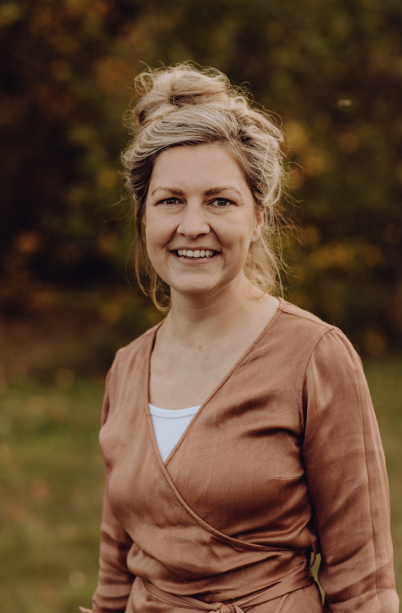Technical innovations in Breast cancer surgery
Anke Christenhusz is a PhD student in the Department of Magnetic Detection and Imaging. (Co)Promotors are prof.dr.ir. B. ten Haken and dr.ir. L. Alic from the Faculty of Science & Technology and dr. A.E. Dassen from Medisch Spectrum Twente.
 Breast cancer is the most common cancer among women worldwide, often requiring surgical intervention alongside additional pre- or post-treatment measures. Managing the disease effectively necessitates ongoing research, screening, and advancements in surgical techniques, particularly crucial for early-stage breast cancer where accurate lymph node staging and image-guided localization for non-palpable lesions are essential. Optimization of surgical treatments involves considerations such as oncological safety, cost-effectiveness, workflow efficiency, physician and patient preference, and ease of use. Efforts to transition towards radiation-free approaches for staging and identifying non-palpable breast lesions are actively pursued.
Breast cancer is the most common cancer among women worldwide, often requiring surgical intervention alongside additional pre- or post-treatment measures. Managing the disease effectively necessitates ongoing research, screening, and advancements in surgical techniques, particularly crucial for early-stage breast cancer where accurate lymph node staging and image-guided localization for non-palpable lesions are essential. Optimization of surgical treatments involves considerations such as oncological safety, cost-effectiveness, workflow efficiency, physician and patient preference, and ease of use. Efforts to transition towards radiation-free approaches for staging and identifying non-palpable breast lesions are actively pursued.
Accurate disease staging during the diagnostic phase is imperative, ideally achieved through non-invasive, and highly accurate methods. The replacement of invasive sentinel lymph node biopsy (SLNB) with preoperative SLN staging utilizing superparamagnetic iron oxide (SPIO)-enhanced MRI offers advantages such as decreased patient morbidity and healthcare costs. While preliminary research comparing histopathological and MR images of magnetic SLNs shows potential, further development is needed to accurately quantify metastatic involvement.
Recent years, hospitals are increasingly exploring non-radioactive alternatives for intraoperative tumour localization, driven by logistical advantages, regulatory considerations, and sustainability goals. Innovations like magnetic marker localization are proving comparable to traditional techniques, offering significant savings by circumventing radioactive material regulations, reducing hospital stays, minimizing re-excisions, and high satisfaction among medical specialists.
SPIO as a magnetic tracer for SLNB demonstrates high concordance with traditional methods but may lead to skin discoloration and MRI artefacts. Meta-analyses suggest improved detection rates with specific injection protocols, but the risk of iron residue remains a barrier to widespread adoption. Another radiation-free SLN detection alternative, indocyanine green (ICG), is well-received for intraoperative lymph node visualisation, yet challenges like spillage and the absence of preoperative mapping may complicate the procedure. Further exploration of combined tracers, such as SPIO for MRI-based mapping and ICG for intraoperative imaging, is warranted. When considering combining magnetic tumour localization with magnetic SLNB, challenges such as overlapping magnetic signals and potential iron residue must be addressed.
Postoperative imaging plays an important role in monitoring treatment efficacy and detecting recurrence. However, magnetic tracers used in surgery may induce MRI artefacts, potentially impacting diagnostic accuracy during follow-up. The duration of these artefacts post-injection is uncertain, but an adjusted injection protocol or contrast-enhanced mammography (CEM) emerges as a potential alternative for postoperative MRI.
In conclusion, recent technical advancements in breast cancer diagnosis and treatment aim to improve accuracy, efficiency, and patient outcomes. While preoperative staging with SPIO-enhanced MRI holds promise for the future, further refinement is necessary. Magnetic markers for tumour localization offer a safe and reliable alternative to conventional techniques, while combined ICG-SPIO tracer approaches show potential in optimizing intraoperative SLN detection. Patient stratification may be crucial, with different tracers suited to varying clinical scenarios.





